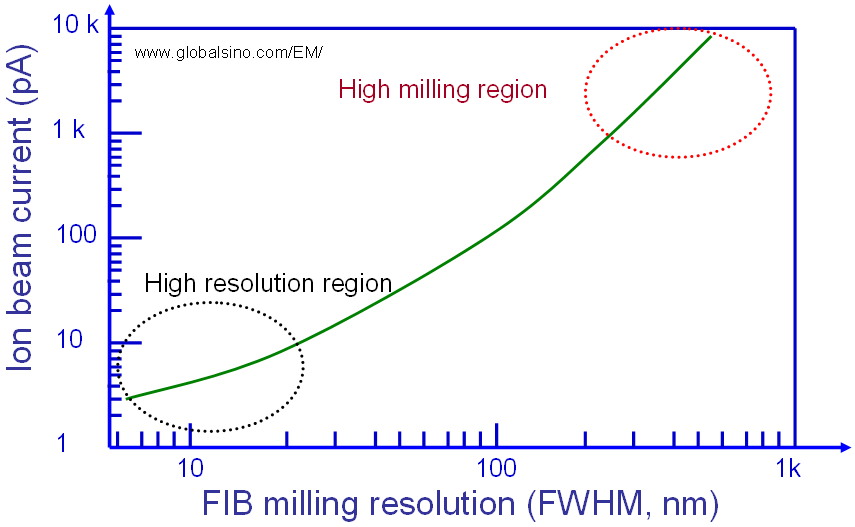=================================================================================
Lateral resolution of FIB is determined by two factors:
i) the smallest ion probe achievable in a given FIB,
ii) the lateral range of probe ions in the material.
The smallest achievable probe size is determined by the FIB column contrast transfer function and coulombic interactions of ions within the beam. [1]
Therefore, the probe size for FIB milling can be given by,
 ------------------- [2477a] ------------------- [2477a]
where,
M -- The magnification.
dq -- The virtual source diameter.
ds -- The spherical aberration.
dc -- The chromatic aberration.
The spherical aberration and chromatic aberration are given by,
 ------------------- [2477b] ------------------- [2477b]
 ------------------- [2477c] ------------------- [2477c]
where,
α -- The convergence half-angle.
The convergence half-angle is determined by,
 ------------------- [2477d] ------------------- [2477d]
At low beam currents, the resolution is mainly determined by the size of the emission area on the probe. At medium currents, the resolution is mostly affected by the chromatic aberration. However, at high currents, the resolution is mainly controlled by the spherical aberration.
Figure 2477 shows the dependence of FIB resolution on beam current. The resolution is higher when the current is lower.

Figure 2477. Dependence of FIB resolution on beam current.
It is well-known that the damage may be reduced with the use of lower-energy ion beam in FIB milling but this also induces a degradation of spatial resolution. This resolution behavior is especially important when we are patterning in nanoscale.
[1] Orloff J, Review of Scientific Instruments, 64, 1105-1129,(1993).
|